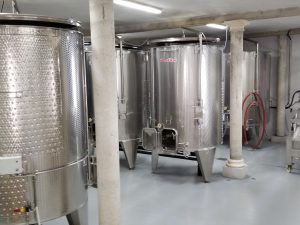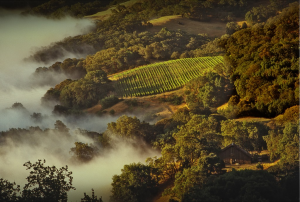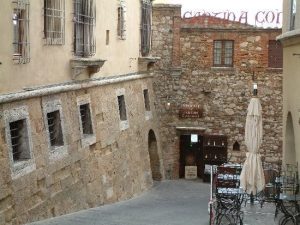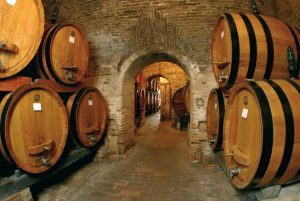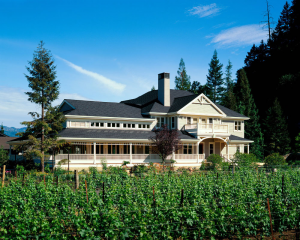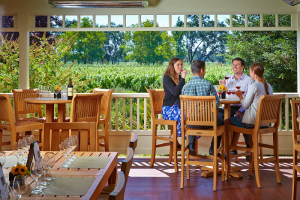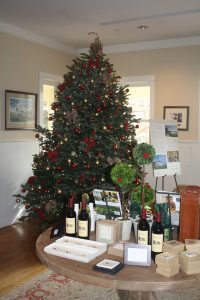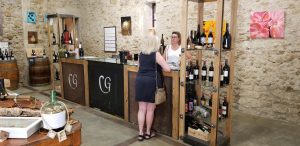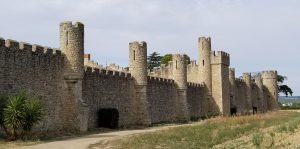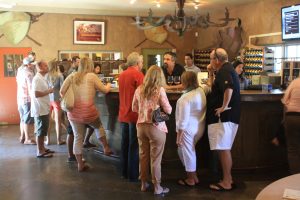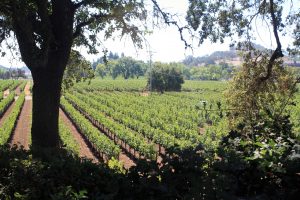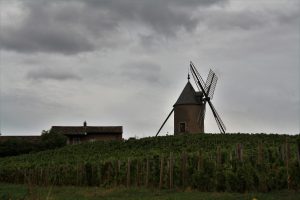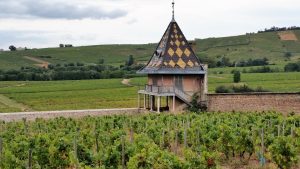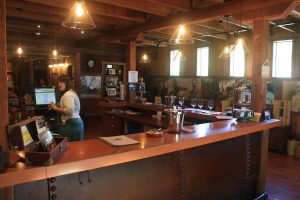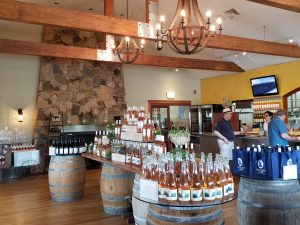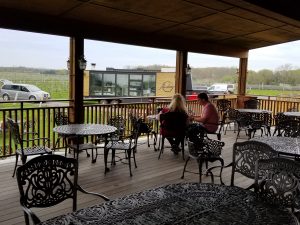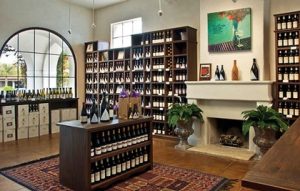In southwest France, up in the hilly area not far from the Mediterranean, you’ll find the winemaking sector called Faugères. Because of the terrain, made of rocky soil called schist, the wines tend to be full-flavored with a minerally cast on the tongue. By the way, there is a very fine St. Emilion called Chateau Faugères, but to the best of our knowledge there is no relationship with this area.
Now, sadly, the wines of this area – in fact, all of the Languedoc – used to have the reputation for being harsh, overly alcoholic and sour. Fortunately, many wineries in the area have discovered that sound growing techniques and sanitary winemaking can produce excellent wines that reward the growers more than the production of plonk used to. One such is Château des Estanilles.
We sought out this winery because we had enjoyed one of their wines in Québec. The provincial wine stores keep it well-stocked on their shelves, but we haven’t been able to locate it in the United States. We learned that the wine we liked is in fact the bottom of their list. Called “The Impertinent”, this wine in both red and white is mass produced (at least as “mass” as Faugères ever gets) and so there’s enough to satisfy foreign demand. Their finer wines are made in more limited quantities and are only sold in France, mostly within the region.
Chateau des Estanilles winery
North American visitors to Château des Estanilles will feel right at home. The winery is not a magnificent castle nor is it a rustic farmhouse. It’s a cream-colored building with a tiled roof that would be right at home in Napa Valley. Beyond it are extensive vineyards and the aforementioned hills, rising up on the horizon. The interior is sleek and modern, with a tasting room that is a large white table, not a bar. The setting makes you feel more like a guest than a visitor.
A very helpful attendant (it would be hard to call her a server) will fill your glass with any or all of their wines, topping out with their Raison d’Etre, made of Syrah, Grenache and Mourvèdre. At 48 euros ($55), it isn’t cheap but it’s a lot less than a wine of equivalent quality would be elsewhere in France. [It isn’t Power Tasting’s usual practice to discuss wine prices. However, we want to give an idea of the value you can get for your money with Languedoc wines.]
As might be expected, you will get more out of your visit if you can speak French. But at Château des Estanilles, as elsewhere in the area, the people are used to having English-speaking guests and will gladly accommodate you. It would help if you try to at least pronounce the name of their winery correctly: ESS-ta-neel.
The working area in the Chateau des Estanilles winery
When you visit Château des Estanilles, be sure to take a look at their winemaking facilities. They are all modern, with lots of stainless steel and clean as a whistle. This is instructive, because it shows how the Languedoc’s vintners have advanced. You won’t be able to see the natural techniques they use in the vineyards, eschewing pesticides and fertilizers. But you can give respect to the modernity of their winemaking practices.

